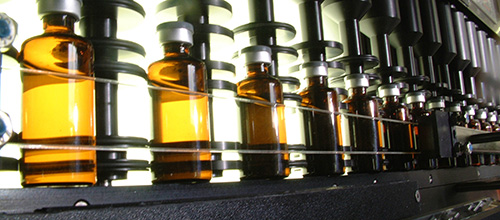USP Chapter <1790> Visual Inspection of Injections published
Recommendation

Thursday, 12 February 2026 9 .00 - 17.00 h
The long-awaited USP Chapter <1790> regarding the 100% visual control of injectables has now been issued as a first draft in the Pharmacopeial Forum 41(1) for commenting.
The new chapter is comprised of the following sub-chapters:
1. Scope
2. Introduction
3. Typical Inspection Process Flow
4. Inspection Life-Cycle
5. Interpretation of Results
6. Inspection Methods and Technologies
7. Qualification and Validation of Inspection Processes
8. Conclusions and Recommendations
9. References
This new informative chapter is applied to the manual, the half-automatic and the fully-automated inspection of parenterals. It mainly aims at controlling particles (>50 µm), but also comprises indications to further defects like cracks in primary containers or poorly fitting stoppers. In Chapter 2 there are also general statements regarding the patient risk due to particulate matter with regards to the size and type of the particulate impurity and the patient's condition or age. It is interesting that this is expanded in Chapter 4 where possible particle sources (stopper, glass, silicon etc.) are mentioned together with the request to prevent any generation of particles. The Sub-chapter 4.2.1 aims at avoiding of intrinsic particles already in product development - e.g. through the prevention of glass delamination, by choosing appropriate formulations and according stability studies. Supplementary, Chapter 4.3 is dedicated the removal of particles, e.g. by washing primary containers and the associated particle depletion studies.
As already described in the USP Chapter <790> the AQL testing is supposed to be part of the evaluation of a batch. For that purpose samples are drawn from the good proportion of the tested batch according to defined sampling plans. These samples are then tested again to evaluate the quality of the preceeding 100% control. The AQL limits named exemplarily in Chapter <17990> are more strict, though, as those in the ECA Best Practice Paper for the visual control.
Some practical tips are contained in Chapter 5. For instance, it is suggested there to enhance the illumination to 10.000 Lux and to possibly screen the containers from the back when testing brown glass or plastic containers as a visual control for these containers is difficult to conduct.
Chapter 7 (Qualification/Validation of inspection processes) is mainly directed towards the manual visual inspection. It comprises tips for the creation of test sets and the qualification as well as the re-qualification of personnel. The application of Knapp tests for determining the detection rates is also mentioned there. However, there are only very few tips for the fully-automated inspection, and there are no details referring to the qualification or re-qualification of fully-automated inspection processes.
The draft of the new Chapter <1790> is available online on the USP website. You will only need to register, which is free of charge, though. The deadline for comments is the 31 March 2015.




